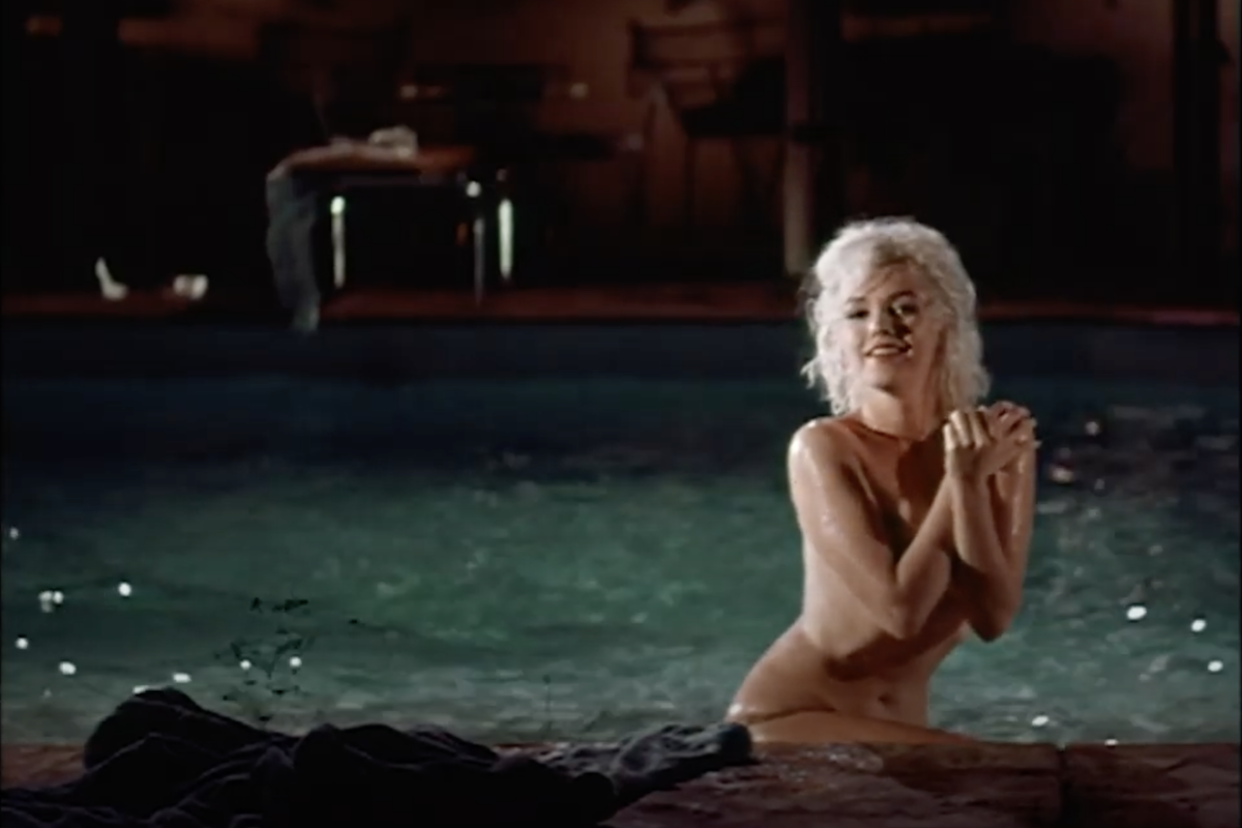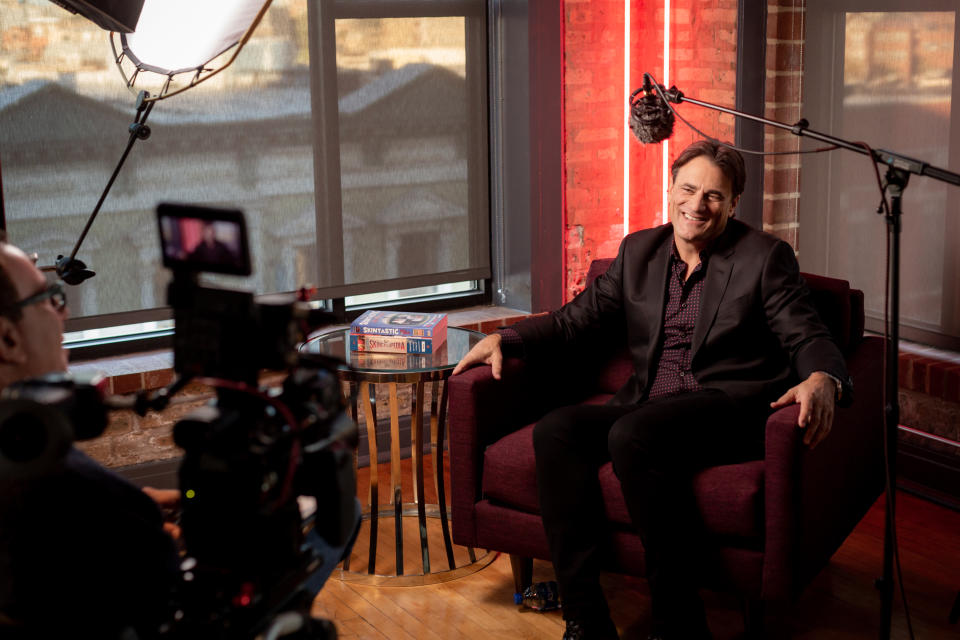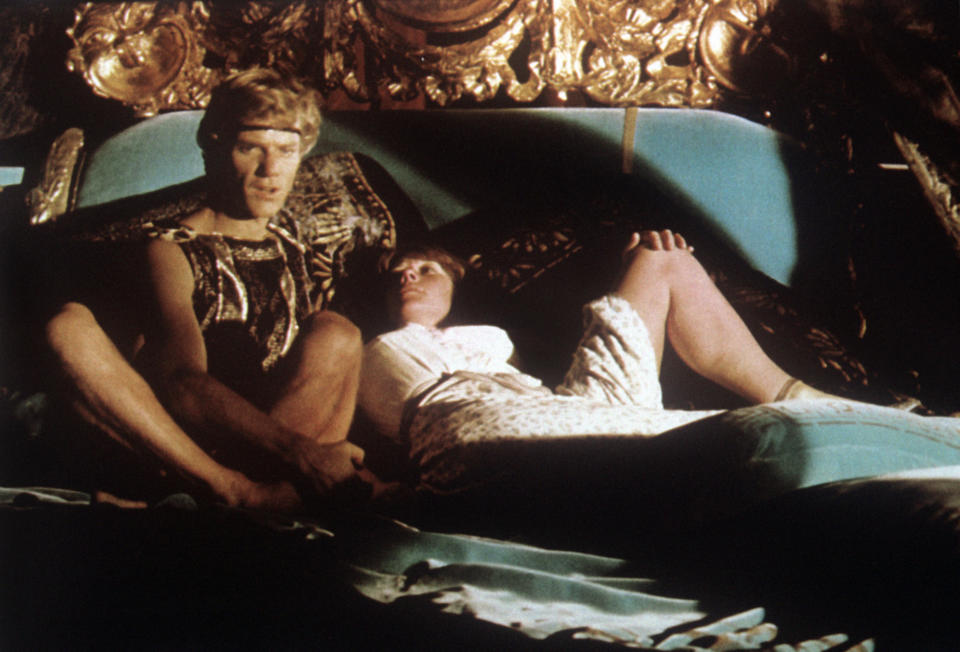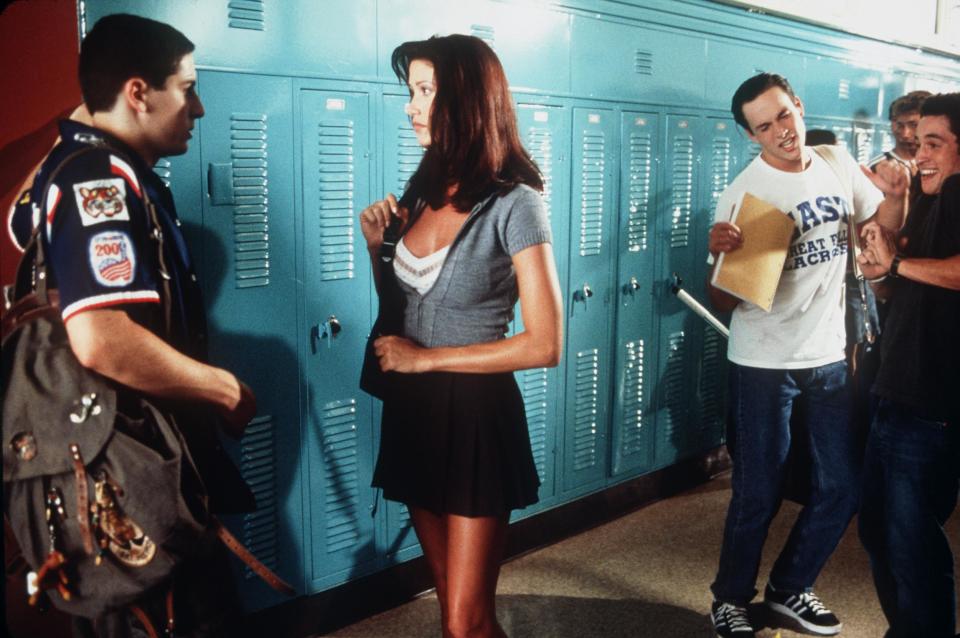'Skin' filmmakers talk the nakedest movie of all time, how #MeToo movement changed nudity in film forever

As the creator of the popular website Mr. Skin, Jim McBride has spent over two decades celebrating and cataloging nudity in movies.
But in producing his first motion picture, the new documentary Skin: A History of Nudity in the Movies – which is, well, exactly what it sounds like – McBride wanted to take a more academic approach. Something college professors could show film majors. Call it naked academia. “We didn’t want to do something exploitative, we didn’t want to do a breast fest,” says director Danny Wolf (Time Warp, Gigolos), who McBride recruited onto the project when he realized there had never been a definitive documentary made on the subject. “I think we were able to accomplish the impossible, which making this a legitimate, informative and educational [film that] at the same time, is extremely entertaining,” McBride says. And make no mistake, it may not be a “breast fest,” there is a lot of skin in Skin.
The film chronologically traces the evolution of onscreen nudity, both male and female, from the advent of film in the late 19th century (“Probably 20 minutes after they invented film somebody thought, ‘Wouldn’t it be neat if we started photographing naked people?,’” UCLA professor Jonathan Kuntz says) through the Fifty Shades of Grey movies of the 2010s. There are explorations into the Silent Film era (1915-1927), the implementation of the nudity-prohibiting Motion Picture Production Code (1935-1968), the growing market for “nudies” in the ‘50s, the swinging ‘60s, and the eve wilder ‘70s, which both McBride and Wolf say marked the most liberal America ever was when it came to on-screen nudity.

McBride and Wolf wisely took a more nuanced and sensitive approach to their subject in the wake of the #MeToo movement, which not only outed the sexual misconduct of countless entertainers and men in power but also provided women a megaphone to expose the oftentimes dicey circumstances in which they’ve been pressured or forced to disrobe on camera.
“We wanted to make sure it wasn't tone-deaf, and that we were careful to give voice to actresses and women in the industry, getting their perspective,” says McBride.
Video: New documentary examines the history of nudity on film
And the filmmakers deftly toe that line. Though that won’t stop McBride, the Roger Ebert of movie nudity, from gushing over his all-time favorite naked scene. It’s Phoebe Cates’ iconic red bikini drop in the 1982 comedy Fast Times at Ridgemont High. “It’s not only a great nude scene, but it’s a great movie,” he says. “And when you combine the two plus the beauty of Phoebe Cates, that’s why it’s my choice of the greatest nude scene of all time.”
As for the most famous? McBride says it likely comes down to Kate Winslet’s topless scene in Titanic (1997) – rare for a PG-13 movie, and watched to the tune of over $1.84 billion at the time of its release – and Sharon Stone’s infamous leg cross in Basic Instinct. “It’s just so shocking, and it’s been parodied so much,” Wolf says. “Everyone remembers that,” McBride adds. “It’s just one of those things. If you say Basic Instinct, your mind goes right to that scene.”

Pound for pound, flesh for flesh, though, when it comes to the most naked mainstream movie of all time there’s a clear consensus. That would be Caligula, Tinto Brass’s 1979 erotic historical drama starring Malcolm McDowell as the First-century Roman emperor. The film was produced by Penthouse founder Bob Guccione, who, despite its impressive cast of thespians, injected it with not only gaggles of gratuitous nudity but also explicit unsimulated sex scenes.
“So as this Tinto Brass is making his Caligula movie, [Guccione] is sort of making his own movie at the same time using the sets in the middle of the night, [filming] extra sex and then pouring the scenes into the movie,” Wolf explains. “It was one of the seminal movies with out of control nudity.”
“It really was a porn movie,” McBride says. “I think a lot of people will be surprised if they’re not familiar that you had Sir John Gielgud, Helen Mirren, Malcolm McDowell and Peter O’Toole in a literal X-rated porn movie. They’ll be blown away that you had these titans of their craft in this movie.”
McDowell, the if… (1968) and Clockwork Orange (1971) actor who long before Ewan McGregor could’ve been called Hollywood’s most undressed actor, hilariously recalls his experience watching Caligula for the first time. He remembers one cutaway in particular: On set, he’s looking at an owl and responds with a sly grin. In the finished version, though, that same sly grin follows a graphic orgy shot, as if McDowell is reacting to it with glee, while he wasn’t even there for its filming and didn’t even know it’d be in the movie.
Many of the actresses interviewed for Skin say they had no problem doing nudity and have no regrets, some even crediting it for their success. “If I hadn’t done American Pie and I hadn’t done the role of Nadia and the nudity that came along with it, I might not have a career today,” says Shannon Elizabeth, who signed a three-picture deal with Miramax shortly after the 1999 R-rated teen comedy became a box office hit.

Others are torn, however, and a number of women make damning or disturbing revelations in the film. Sean Young and Rena Riffel both say they were prodded to take off their clothes during the audition process for their films, No Way Out (1987) and Striptease (1995), respectively. Linda Blair describes what sounds like a physical assault from her Chained Heat (1983) costar John Vernon. And Vixen star Erica Gavin says she became anorexic after watching herself naked on the big screen at the film’s premiere, at one point shrinking down to 76 pounds.
The reckoning of the #MeToo movement has brought a more heightened awareness of how nude scenes are negotiated, executed and even viewed.
“I think it’s really important for women to know that nudity in film is a choice, not an expectation,” says actress Diane Franklin (The Last American Virgin) in the film.
“Distinguishing between essential nudity and exploitation nudity is really tricky because sometimes they clash even in the same film,” says critic Amy Nicholson.
One direct result of #MeToo’s effect on on-screen nudity is the regular hiring of intimacy coordinators, professional consults on film and television sets who assure that the actors feel safe, both physically and emotionally, while shooting difficult scenes.
“I think women are more empowered now,” McBride says. “So that when there are nude scenes, they're more in control. They're in agreement. It's not thrust upon them. It's not [like the past], where they’re forced to do it or they lose the gig… There's more nudity [now], but women are more in control of the nudity, which is an important thing… It’s a good thing.”
Skin: A History of Nudity in the Movies is now streaming.
Watch the trailer:
Read more on Yahoo Entertainment:

